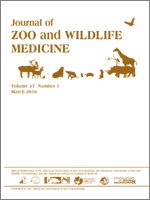Sea urchin mass mortality events have been attributed to both infectious and noninfectious etiologies. Bacteria, including Vibrio spp. and Pseudoalteromonas spp., have been isolated during specific mortality events. Aquarium collection sea urchins are also subject to bacterial infections and could benefit from antimicrobial treatment, but pharmacokinetic studies have been lacking for this invertebrate group until recently. This study evaluated the pharmacokinetics of enrofloxacin and its active metabolite ciprofloxacin in the green sea urchin (Strongylocentrotus droebachiensis) after intracoelomic injection and medicated bath immersion administration. The utility of a population pharmacokinetic method using nonlinear mixed effects modeling (NLME) was also evaluated. Thirty sea urchins were assigned to either the injection or immersion group. Twelve study animals and three untreated controls were utilized for each administration method: enrofloxacin 10 mg/kg intracoelomic injection or a 6-hr enrofloxacin 10 mg/L immersion. Each animal was sampled four times from 0 to 120 hr. Water samples were collected during immersion treatment and posttreatment time points in both groups. Hemolymph and water sample drug concentrations were analyzed using high-performance liquid chromatography, and pharmacokinetic parameters were determined using an NLME population pharmacokinetic method. Enrofloxacin concentrations were fit to a two-compartment model with first-order input for the intracoelomic injection group. The enrofloxacin elimination half-life (t½), peak hemolymph concentration (CMAX), and area under the curve (AUC) were 38.82 hr, 90.92 μg/ml, and 1,199 hr·μg/ml, respectively. Enrofloxacin was modeled to a one-compartment model with first-order input for the immersion treatment. The enrofloxacin t½, CMAX, and AUC were 33.46 hr, 0.48 μg/ml, and 32.88 hr·μg/ml, respectively. Ciprofloxacin was detected in trace concentrations in all hemolymph samples, indicating minimal production of this metabolite. The concentrations of enrofloxacin achieved far exceeded minimum inhibitory concentrations reported for teleost pathogens. No adverse effects were associated with enrofloxacin administration by either treatment method or from hemolymph sampling.
How to translate text using browser tools
1 March 2016
POPULATION PHARMACOKINETICS OF ENROFLOXACIN AND ITS METABOLITE CIPROFLOXACIN IN THE GREEN SEA URCHIN (STRONGYLOCENTROTUS DROEBACHIENSIS) FOLLOWING INTRACOELOMIC AND IMMERSION ADMINISTRATION
Brianne E. Phillips,
Craig A. Harms,
Gregory A. Lewbart,
Lesanna L. Lahner,
Martin Haulena,
Justin F. Rosenberg,
Mark G. Papich
ACCESS THE FULL ARTICLE
ciprofloxacin
echinoderms
enrofloxacin
green sea urchin
pharmacokinetics
Strongylocentrotus droebachiensis





